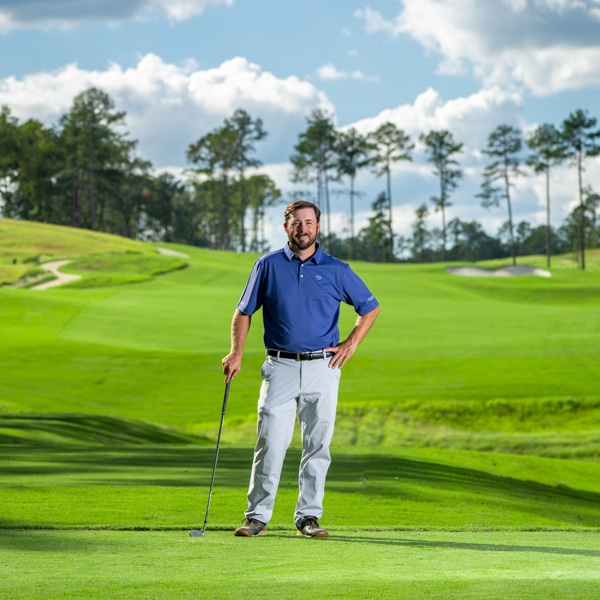With my arms outstretched to either side and my fingers extended, I hold a statuesque pose as Sean Cain, lead instructor at the Reynolds Kingdom of Golf presented by TaylorMade, stands behind me with a tape measure. I’m less than a minute into my first meeting with Cain, and with a yellow metallic measuring tape stretched across my back and arms, one thing is abundantly clear: this will be a golf lesson unlike any that I’ve had before.
“This is just finding out who you actually are,” the 45-year-old instructor tells me.
Cain embraces BioSwing Dynamics, a teaching philosophy/program structured around an individual golfer’s natural strengths, tendencies, and physical measurements. Beyond bucking popular teaching ideals as to how every good golf swing should look, BioSwing Dynamics also changes how video analysis of a player’s swing is assessed. In past lessons I’ve taken, video comparisons were often drawn between my swing and those of tour players said to have ideal mechanics. Yet, as I’m quickly learning during this first lesson with Cain, if my physiological makeup doesn’t perfectly align with those tour players—analysis that includes (among other measurements) the ratio of my height to the length of my wingspan, the rotational capabilities of my hips, and the length of my upper arm compared to that of my forearm—then my ideal swing may not be a carbon copy of theirs. Even more important, any attempt that I make to replicate their swings is preventing me from playing my best.
For the majority of my golfing life I played with—and struggled to correct—an over-the-top motion in my swing, a tendency familiar to the vast majority of amateurs, which forces those aspiring scratch golfers to swing across the ball and often produces a dreaded slice. While I’ve mostly eliminated that motion over the past five years, I’ve struggled to really feel like my downswing is coming at the ball from the inside, despite past instructors’ frequent admonitions that I should. As it turns out, thanks to my introduction to BioSwing Dynamics, that is not a feeling that I’ll likely ever experience, even when my swing path is on track. “Your forearm is 1.75 inches longer than your upper arm,” Cain tells me. “That means, coming down the club is going to feel like it’s outside; it’s never going to feel underneath.
“If you were a robot and a computer,” he continues, “and I could just hit control-alt-delete and you would forget every other swing that you’ve ever made, you would basically hit a trap fade.” His analysis makes sense; after all, long before I ever took a lesson, my natural shot shape was always left to right. In recent years, I worked hard to transform that into a controlled draw, but in doing so I lost the ability to hit fades on command. Truthfully, I’ve never felt that I could feel or control the angle of the club face at impact. However, after tweaking one simple aspect of my takeaway, Cain has my downswing feeling smooth and succinct. Best of all, that revamped swing has allowed me to start shaping shots on command and with moderate confidence almost immediately.
“It’s like I’ve given you a key and unlocked efficiency in your body just by making one change,” says Cain. That’s the beauty of BioSwing Dynamics. After a single 45-minute lesson at the Reynolds Kingdom of Golf, I’m a believer; and that, according to Cain, is the most critical part of the process. “If people believe it and they buy into it,” he says, “they settle their golf swing issues forever.”







